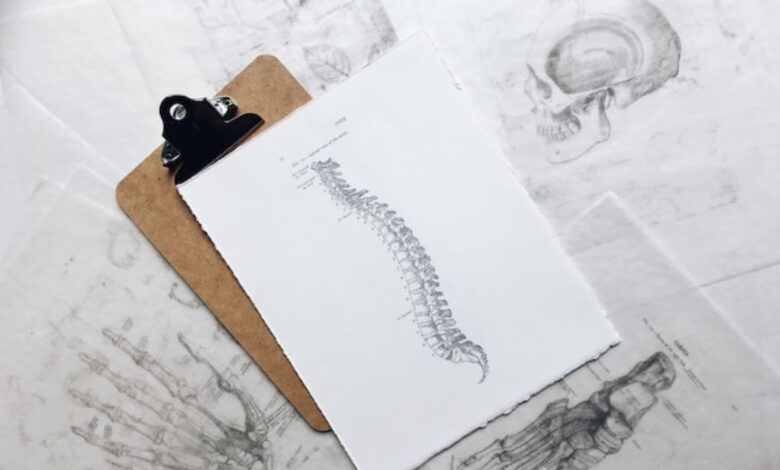Joint Pain – What Are The Best Treatment Options?

Imagine waking up every morning with excruciating joint pain that makes simple tasks like walking or climbing stairs challenging. Some of us don’t have to imagine because that’s the life we live. Joint pain is a condition that affects millions of people around the globe. It makes life difficult, causing discomfort, limiting mobility, and impacting daily activities and simple tasks.
There is no doubt that it’s a debilitating ailment. However, there’s still hope for people who experience joint paint. The good news is that there are numerous treatment options available to help manage and lessen joint pain. In this blog, we will navigate through various treatment options that are best for pain management and improving our quality of life.
Understanding Joint Paint: Causes And Treatment Options
Usually, joint pain manifests in various forms and types. For many people, it only arises after exertion, while for others, it’s a constant dull ache throughout the day. The severity ranges from dull to sharp and intense to slight discomfort. To effectively manage joint pain, it is essential to have a solid understanding of its underlying causes.
The most common factors related to joint pain are arthritis, injuries, autoimmune diseases and inflammation, and old age. Some infections may also cause joint pain, but such cases are treated for the infection first and foremost. Once the infection subsides, the pain alleviates slowly too.
Other disorders such as lupus and psoriasis are also a leading cause of joint pain. These conditions often involve the body’s immune system attacking the joints or surrounding tissues, causing inflammation, swelling, and pain. Other than that, acute injuries such as ligament tears, sprains, and muscle sprains may also cause severe joint pain.
Understanding the specific cause of pain is an important step in its treatment. You could be taking all the painkillers and following every treatment regimen without any improvement if the underlying cause isn’t treated. So, it’s always better to consult a healthcare professional for the treatment of the cause while simultaneously working on managing and treating joint pain. That’s the only way to find complete relief.
Following are some of the treatment options that can contribute to a better quality of life:
1. Lifestyle Changes
Making minute changes in your lifestyle can provide big results when it comes to treating pain. After all, living a healthy life is a crucial step in the treatment of every medical condition. Some changes that we can make to improve our pain are:
Dietary Modifications
Incorporating anti-inflammatory food can significantly impact and reduce joint pain. Foods that are rich in omega-3 and vitamins help combat inflammation and decrease its effects. This, in turn, decreases the ache in our joints.
On the other hand, processed foods, sugary drinks, and foods high in saturated fats increase inflammation and add more to our pain. Hence, limit processed foods and add omega-3 to your diet to better manage joint pain.
Weight Management
Obesity is an unfavorable condition that worsens joint pain. Therefore, it’s absolutely crucial to maintain a healthy weight. This will reduce stress on the joints and alleviate pain. Make sure to consult a professional for guidance on a suitable weight management plan instead of going on the internet and choosing the fastest way to lose weight. Shortcuts like that will only make your condition worse.
Low-impact Exercises
Exercise is one of the best ways to maintain a healthy lifestyle. It helps us stay active instead of living a sedentary life that harms our muscles, bones, and joints. It also helps manage healthy weight and reduce stress in our body. However, if you are looking for exercises as a treatment for joint pain, you must engage in exercises that are gentle on the joints, such as swimming, cycling, or walking.
2. Medications And Nutritional Supplements
Medications and natural supplements are a surefire treatment option for joint pain. But it’s important to consult your physician before taking any kind of medication, even if it’s a simple pain killer.
Disease-Modifying Antirheumatic Drugs (DMARDs)
DMARDs are drugs that are used to modify and reduce the progression of certain types of arthritis. These drugs act to suppress or modulate the immune response, which reduces inflammation and prevents further joint deterioration.
JAK Inhibitors
Janus Kinase pathway is a key point in the inflammatory response. JAK inhibitors target the pathway and work by blocking specific enzymes that transmit signals involved in inflammation and immune responses. JAK inhibitors help reduce the production of inflammatory proteins, alleviating symptoms associated with autoimmune and inflammatory conditions.
Pain Relief Drugs
Analgesics (acetaminophen) and NSAIDs (ibuprofen) are also effective drugs in the treatment of joint pain. Simple yet effective, these drugs work on specific immune pathways, blocking pain signals and reducing inflammation in the body. The best part about these drugs is that they are quite proficient in treating various kinds of joint pain.
Whether it’s acute pain due to any injury or chronic pain caused by a disorder, pain relief drugs are truly a lifesaver!
Topical Medications
Topical pain relief medications are applied directly to the skin over the affected area. They come in various forms, including creams, oils, gels, patches, or sprays. These medications can provide localized pain relief and are commonly used for conditions like muscle strains, arthritis, or minor injuries.
Usually, these medications consist of a combination of ingredients such as analgesics, CBD, and essential oil. These help in reducing inflammation and promote healing too. Just make sure that these healing agents are reliable for example, you can opt for Oasis Cosmetics CBD products as they are safe to use and are third-party tested. Such practices ensure that your treatment is in safe hands.
Glucosamine And Chondroitin Sulfate
Glucosamine, chondroitin sulfate, and SAM-e are commonly used supplements for joint health. Since they are natural, these supplements are generally well tolerated and show little to no side effects compared to the usual drugs taken for joint pain.
These naturally found compounds help treat joint pain by stimulating cartilage component production and decreasing its breakdown. They also help to maintain the structural integrity of cartilage and promote fluid retention within the joints.
3. Physical Therapy
Physical therapy is the key to a happy life with improved mobility and increased function for people suffering from joint diseases. It aims to improve the strength and flexibility of muscles and joints to enhance mobility and decrease stiffness and pain associated with immobility.
Physical therapists are trained to understand every kind of joint pain. They can examine your condition and create a routine that’s better suited for you. Tailored exercises that meet your needs are among the finest ways to treat joint pain and associated conditions.
4. Mind-Body Therapies
Mind-body therapies manage joint pain by reducing stress and promoting relaxation. They help individuals gain control over the aggravation and frustration addicted to chronic joint pain and improve our mental strength, which helps us easily get through depressive episodes of debilitating pain.
Relaxation Techniques
Relaxation techniques aim to reduce stress, promote calmness, and induce a state of relaxation in the mind and body. Incorporating these techniques into our daily life can be beneficial for managing joint pain, as stress and tension can exacerbate pain symptoms. A few relaxation techniques that have shown improved results in individuals with joint pain are deep breathing exercises, progressive muscle relaxation (PMR), and guided imagery.
During deep breathing exercises, you should take slow, deep breaths and focus on the breath as it enters and leaves the body. This technique will help activate the body’s relaxation response, which can reduce muscle tension in your body and promote a sense of calm in your mind and heart.
Biofeedback
Biofeedback is a technique that uses electronic sensors to provide real-time feedback about physiological processes in the body, such as heart rate, muscle tension, or skin temperature. By learning to control these processes through a feedback mechanism, one can achieve a state of relaxation and gain better control over their physical responses to stress and pain.
This technique helps us stay calm while managing painful stimuli. It promotes a sense of well-being in our body and helps us deal with pain through complete mindfulness instead of anxiety and panic that exacerbate pain.
5. Surgical Treatments
In severe cases where conservative treatments are ineffective, surgical intervention is necessary to treat pain. Some common surgical treatments for joint pain are RFA, arthroscopy, joint fusion, and joint replacement surgery. It’s important to note that these surgeries are done as a last resort in conditions that show no results with other treatment options. So, if one treatment doesn’t work for you, choose another instead of just jumping to surgeries.
The Bottom Line
By understanding the options at hand, we can take proactive steps toward overcoming joint pain and reclaiming an active, pain-free life. As we mentioned above, there are various treatment options available for every kind of joint pain. It’s crucial to consult a healthcare professional before opting for any treatment. After all, they are trained to find the most suitable option for your specific condition.



